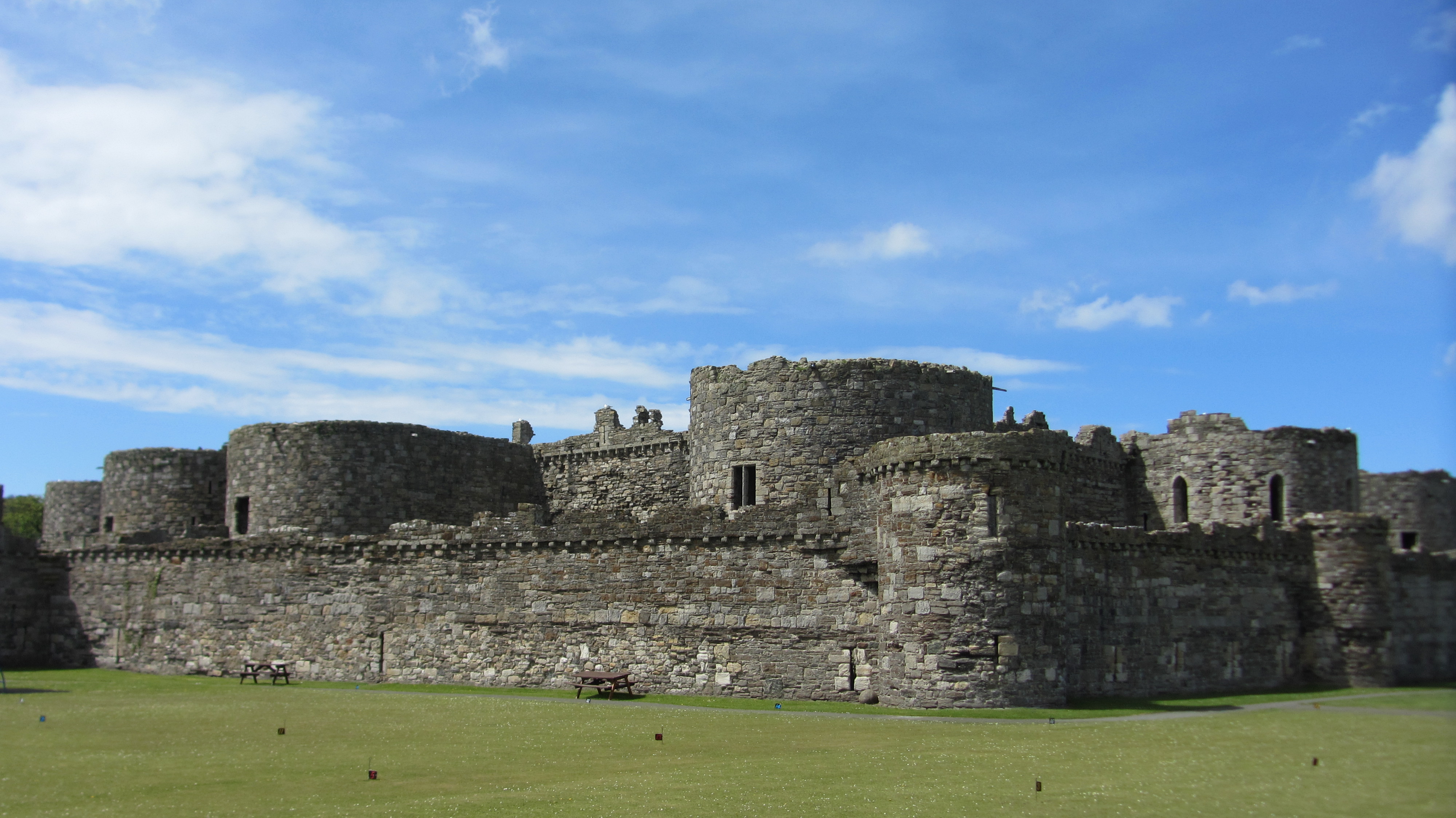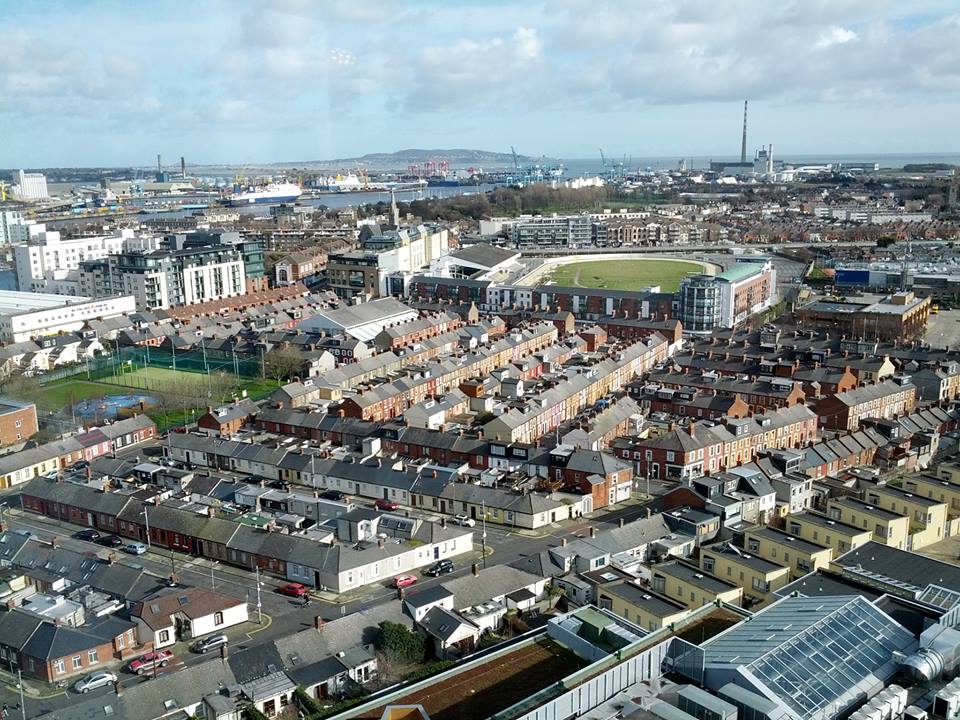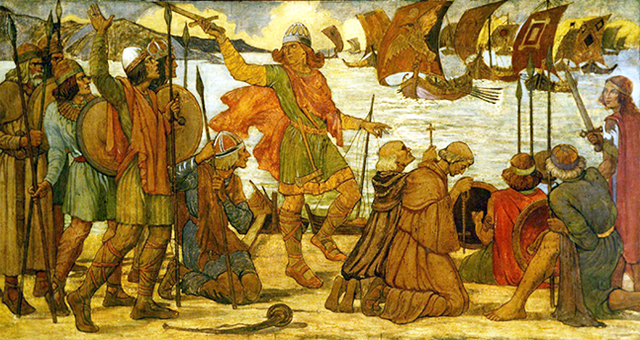|
PS Hibernia (1847)
PS ''Hibernia'' was a paddle steamer passenger vessel operated by the Chester and Holyhead Railway from 1847 to 1859 and the London and North Western Railway from 1859 to 1877.Railway and Other Steamers, Duckworth. 1962 History She was built by Thomas Vernon of Liverpool for the Chester and Holyhead Railway. On 27 September 1849, she towed the disabled in to Holyhead, Anglesey. ''Cambria'' had suffered a broken main shaft. On 1 October 1854, she assisted in the refloating of , which had run aground off Ringsend, County Dublin the next day. The Chester and Holyhead Railway was taken over by the London and North Western Railway in 1859. She was sold to the Waterford and Limerick Railway in 1877 and used as a hulk until 1897. She foundered off the Smalls The Smalls are a Canadians, Canadian hard rock/heavy metal music, metal band formed in 1989 in Edmonton, Alberta, Canada. They were influenced by jazz, hardcore punk, speed metal and country music. They were one of the mos ... [...More Info...] [...Related Items...] OR: [Wikipedia] [Google] [Baidu] |
Chester And Holyhead Railway
The Chester and Holyhead Railway was an early railway company conceived to improve transmission of government dispatches between London and Ireland, as well as ordinary railway objectives. Its construction was hugely expensive, chiefly due to the cost of building the Britannia Bridge, Britannia Tubular Bridge over the Menai Strait. The company had relied on Government support in facilitating the ferry service, and this proved to be uncertain. The company opened its main line throughout in 1850. It relied on the co-operation of other railways to reach London, and in 1859 it was absorbed by the London and North Western Railway. There were extensive mineral deposits at a number of locations south of the C&HR main line, and the C&HR and the LNWR encouraged the building of branch lines to serve them. Llandudno was an early centre of leisure and holiday travel, and in the last decades of the nineteenth century, that traffic became increasingly important. In the twentieth century, the ... [...More Info...] [...Related Items...] OR: [Wikipedia] [Google] [Baidu] |
London And North Western Railway
The London and North Western Railway (LNWR, L&NWR) was a British railway company between 1846 and 1922. In the late 19th century, the LNWR was the largest joint stock company in the world. Dubbed the "Premier Line", the LNWR's main line connected four of the largest cities in England; London, Birmingham, Manchester and Liverpool, and, through cooperation with their Scottish partners, the Caledonian Railway also connected Scotland's largest cities of Glasgow and Edinburgh. Today this route is known as the West Coast Main Line. The LNWR's network also extended into Wales and Yorkshire. In 1923, it became a constituent of the London, Midland and Scottish (LMS) railway, and, in 1948, the London Midland Region of British Railways. History The company was formed on 16 July 1846 by the ( 9 & 10 Vict. c. cciv), which authorised the amalgamation of the Grand Junction Railway, London and Birmingham Railway and the Manchester and Birmingham Railway. This move was prompted, in ... [...More Info...] [...Related Items...] OR: [Wikipedia] [Google] [Baidu] |
Waterford And Limerick Railway
The Waterford, Limerick and Western Railway (WL&WR), formerly the Waterford and Limerick Railway up to 1896, was at the time it was amalgamated with the Great Southern and Western Railway in 1901 the fourth largest railway in Ireland, with a main line stretching from Limerick to Waterford and branches to Sligo and Tralee. Inception The ( 7 Geo. 4. c. cxxxix) was passed by the Parliament of the United Kingdom on 31 May 1826 and had the distinction of being the first act authorising an Irish railway. No construction followed and it was 1845 before the Waterford & Limerick Railway was authorised by the ( 8 & 9 Vict. c. cxxxi), the first section of the line being opened from Limerick to Tipperary on 9 May 1848, the remainder of the main line being opened in stages, finally reaching Waterford in 1854. Secondary lines The company eventually operated two long branch lines which extended from Limerick, north west to Sligo and south west to Tralee. Branch lines By 1900, there were ... [...More Info...] [...Related Items...] OR: [Wikipedia] [Google] [Baidu] |
Holyhead
Holyhead (; , "Cybi's fort") is a historic port town, and is the list of Anglesey towns by population, largest town and a Community (Wales), community in the county of Isle of Anglesey, Wales. Holyhead is on Holy Island, Anglesey, Holy Island, bounded by the Irish Sea to the north, and is separated from Anglesey island by the narrow Cymyran Strait, having originally been connected to Anglesey via the Four Mile Bridge#The Bridge, Four Mile Bridge. In the mid-19th century, John Stanley, 1st Baron Stanley of Alderley, Lord Stanley, a local philanthropist, funded the building of a larger Stanley Embankment, causeway, known locally as "the Cobb". it now carries the A5 road (Great Britain), A5 and the North Wales Coast Line, railway line. The A55 road (Great Britain), A55 dual carriageway runs parallel to the Cobb on a modern causeway. The town houses the Port of Holyhead, a major Irish Sea port for connections towards Ireland. The population of the town proper as of the 2021 censu ... [...More Info...] [...Related Items...] OR: [Wikipedia] [Google] [Baidu] |
Anglesey
Anglesey ( ; ) is an island off the north-west coast of Wales. It forms the bulk of the Principal areas of Wales, county known as the Isle of Anglesey, which also includes Holy Island, Anglesey, Holy Island () and some islets and Skerry, skerries. The county borders Gwynedd across the Menai Strait to the southeast, and is otherwise surrounded by the Irish Sea. Holyhead is the largest town, and the administrative centre is Llangefni. The county is part of the Preserved counties of Wales, preserved county of Gwynedd. Anglesey is the northernmost county in Wales. The Isle of Anglesey has an area of and a population of in . After Holyhead (12,103), the largest settlements are Llangefni (5,500) and Amlwch (3,967). The economy of the county is mostly based on agriculture, energy, and tourism, the latter especially on the coast. Holyhead is also a major ferry port for Dublin, Ireland. The county has the second-highest percentage of Welsh language, Welsh speakers in Wales, at 57.2%, ... [...More Info...] [...Related Items...] OR: [Wikipedia] [Google] [Baidu] |
Ringsend
Ringsend () is a Southside (Dublin), southside inner suburb of Dublin, Republic of Ireland, Ireland. It is located on the south bank of the River Liffey and east of the River Dodder, about two kilometres east of the city centre. It is the southern terminus of the East-Link (Dublin), East Link Toll Bridge. Areas included in Ringsend are the south side of the Dublin Docklands, and at the west end is the area of South Lotts and part of the Grand Canal Dock area. Neighbouring areas include Irishtown, Dublin, Irishtown, Sandymount and the Beggars Bush, Dublin, Beggars Bush part of Ballsbridge to the south, and the city centre to the west. A key feature of the area is the chimneys of Poolbeg power station. Formerly the point where ships arriving from across the Irish Sea would dock, Ringsend went into decline in the 19th and 20th centuries, when the shipping moved to other locations, although there is still some container shipping. Name Ringsend was originally a long narrow penins ... [...More Info...] [...Related Items...] OR: [Wikipedia] [Google] [Baidu] |
County Dublin
County Dublin ( or ) is a Counties of Ireland, county in Republic of Ireland, Ireland, and holds its capital city, Dublin. It is located on the island's east coast, within the Provinces of Ireland, province of Leinster. Until 1994, County Dublin (excluding the city) was a single Local government in the Republic of Ireland, local government area; in that year, the county council was divided into three new administrative counties: Dún Laoghaire–Rathdown, Fingal and South Dublin. The three administrative counties together with Dublin City proper form a NUTS III NUTS statistical regions of Ireland, statistical region of Ireland (coded IE061). County Dublin remains a single administrative unit for the purposes of the courts (including the Dublin County Sheriff, but excluding the bailiwick of the Dublin City Sheriff) and Dublin County combined with Dublin City forms the Judicial County of Dublin, including Dublin Circuit Court, the Dublin County Registrar and the Dublin Metropolitan ... [...More Info...] [...Related Items...] OR: [Wikipedia] [Google] [Baidu] |
Smalls Lighthouse
Smalls Lighthouse is a lighthouse that stands on the largest of a group of wave-washed basalt and dolerite rocks known as The Smalls approximately west of Marloes, Marloes Peninsula in Pembrokeshire, Wales, and west of Grassholm. It was erected in 1861 by engineer James Nicholas Douglass, James Douglass to replace a previous lighthouse which had been erected in 1776 on the same rock. It is the most remote lighthouse operated by Trinity House. Previous lighthouse History The original Smalls Lighthouse was erected at the instigation of John Phillips (a Liverpool merchant and shipowner) between 1775 and 1776, to the plans of Liverpool musical-instrument maker Henry Whiteside. It stood on nine oak pillars, allowing the sea to pass through beneath. The original intention had been to use cast iron, but this was "soon abandoned for English oak, as being more elastic and trustworthy". Although it suffered from some rocking, it stood for 80 years. The light was provided by e ... [...More Info...] [...Related Items...] OR: [Wikipedia] [Google] [Baidu] |
1847 Ships
Events January–March * January 4 – Samuel Colt sells his first revolver pistol to the U.S. government. * January 13 – The Treaty of Cahuenga ends fighting in the Mexican–American War in California. * January 16 – John C. Frémont is appointed Governor of the new California Territory. * January 17 – St. Anthony Hall fraternity is founded at Columbia University, New York City. * January 30 – Yerba Buena, California, is renamed San Francisco. * February 5 – A rescue effort, called the First Relief, leaves Johnson's Ranch to save the ill-fated Donner Party of California-bound migrants who became snowbound in the Sierra Nevada earlier this winter. Some have resorted to survival by cannibalism. * February 22 – Mexican–American War: Battle of Buena Vista – 5,000 American troops under General Zachary Taylor use their superiority in artillery to drive off 15,000 Mexican troops under Antonio López de Santa Anna, defeating the Mexicans the next day. * Februar ... [...More Info...] [...Related Items...] OR: [Wikipedia] [Google] [Baidu] |
Passenger Ships Of The United Kingdom
A passenger is a person who travels in a vehicle, but does not bear any responsibility for the tasks required for that vehicle to arrive at its destination or otherwise operate the vehicle, and is not a steward. The vehicles may be bicycles, buses, cars, passenger trains, airliners, ships, ferryboats, personal watercraft, all terrain vehicles, snowmobiles, and other methods of transportation. Crew members (if any), as well as the driver or pilot of the vehicle, are usually not considered to be passengers. For example, a flight attendant on an airline would not be considered a passenger while on duty and the same with those working in the kitchen or restaurant on board a ship as well as cleaning staff, but an employee riding in a company car being driven by another person would be considered a passenger, even if the car was being driven on company business. Legal status In most jurisdictions, laws have been enacted that dictate the legal obligations of the owner of a v ... [...More Info...] [...Related Items...] OR: [Wikipedia] [Google] [Baidu] |
Steamships Of The United Kingdom
A steamship, often referred to as a steamer, is a type of steam-powered vessel, typically ocean-faring and seaworthy, that is propelled by one or more steam engines that typically move (turn) propellers or Paddle steamer, paddlewheels. The first steamships came into practical usage during the early 19th century; however, there were exceptions that came before. Steamships usually use the ship prefix, prefix designations of "PS" for ''paddle steamer'' or "SS" for ''screw steamer'' (using a propeller or screw). As paddle steamers became less common, "SS" is incorrectly assumed by many to stand for "steamship". Ships powered by internal combustion engines use a prefix such as "MV" for ''motor vessel'', so it is not correct to use "SS" for most modern vessels. As steamships were less dependent on wind patterns, new trade routes opened up. The steamship has been described as a "major driver of the first wave of trade globalization (1870–1913)" and contributor to "an increase in int ... [...More Info...] [...Related Items...] OR: [Wikipedia] [Google] [Baidu] |
Ships Built On The River Mersey
A ship is a large vessel that travels the world's oceans and other navigable waterways, carrying cargo or passengers, or in support of specialized missions, such as defense, research and fishing. Ships are generally distinguished from boats, based on size, shape, load capacity and purpose. Ships have supported exploration, trade, warfare, migration, colonization, and science. Ship transport is responsible for the largest portion of world commerce. The word ''ship'' has meant, depending on the era and the context, either just a large vessel or specifically a ship-rigged sailing ship with three or more masts, each of which is square-rigged. The earliest historical evidence of boats is found in Egypt during the 4th millennium BCE. In 2024, ships had a global cargo capacity of 2.4 billion tons, with the three largest classes being ships carrying dry bulk (43%), oil tankers (28%) and container ships (14%). Nomenclature Ships are typically larger than boats, but there is no ... [...More Info...] [...Related Items...] OR: [Wikipedia] [Google] [Baidu] |








